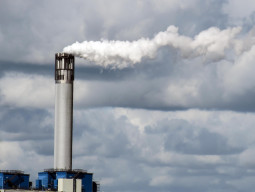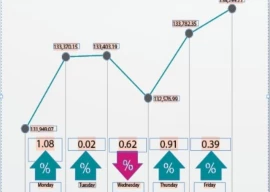
That has provided the government an opportunity to undertake serious reforms and indeed everyone else an opportunity to develop a better understanding. This article takes stock of some of the most commonly narrated myths which are observed both in discourse and policy statements.
Our currency is weaker than regional currencies
This understanding is based on an intuitive, but wrong, calculation. We believe that the more you need local currency units to buy dollars, the weaker the currency is. For instance, an overseas Pakistani worker earning in Dubai needs only 4 dirhams to buy a dollar whereas for a Pakistani worker earning in Lahore, he/she needs Rs150. Hence, it must be true that dirham is stronger than the rupee.
This understanding is flawed as the currency is a unit of measurement only. Japanese yen, to give an example from one of the largest economies of the world, is about 110 to a dollar. For a long time, Pakistani currency had been stronger than the yen, as you could buy two yen from a rupee. Did it mean that Pakistan’s economy was stronger than Japan’s? Certainly not.
The fact that an overseas blue-collar worker in Japan or Dubai does better than in Lahore or Karachi, it is due to the abundance of goods available in these countries, a relatively higher level of household savings and a higher level of per capita income. The essential variable to look for is the production level and productivity, which makes a difference, and not the unit of currency.
Pakistan ponders action after rupee’s free fall
Blame imports; let’s make everything in Pakistan
A popular myth is this “Make in Pakistan” slogan. It is believed that since we need dollars for imports - and we need to import because we can’t produce enough ourselves - so there must be something wrong with the imports. An extreme example, I recently saw on a social media update, is that patriotic Pakistanis should buy from Pakistan State Oil (PSO), and not from MNCs.
The understanding behind this proposal is that somehow PSO uses a brand of home-drilled oil and others import. Obviously, we know it is not true. In fact, over-dependence on PSO for oil supply to strategic units is a possible structural weakness in the economy.
It is common to blame luxury goods which Pakistanis use. The reality is different. First, all top Pakistani imports are non-luxury in nature including petroleum, machinery, and even palm oil. Second, we import these goods because we do not have enough of them to meet their needs.
How shall we run our cars, power generation units, and kitchens without importing oil? The problem is that we do not produce enough to consume, hence, we do not have much to offer back to the world - in simpler words, exports.
Our exports are expensive; devaluation will trigger exports
In principle, it is correct that if we keep our currency artificially higher than the open market level, our exports will become expensive. However, what we saw in the last year was that our exports failed to pick up despite a drastic devaluation, though some imports were curtailed.
It comes back to the same issue of the real economy. As we are not producing what really commands value, and we are not part of global supply chains, whatever we produce does not get us a good price. In this situation, a sudden and steep devaluation, without managing expectations, was set to fail.
In his recently published article, economist and member of Prime Minister’s Economic Advisory Council Asad Zaman have also argued that the control policy is wrong and it ignores fundamental economic realities. However, a deeper reading of his article points out that he treats currency valuation as more fundamental to the real economy than it deserves and believes that a flexible exchange rate will bring new industries.
Capital is sticky, and while it is possible to change the exchange rate by the stroke of a pen, it is not possible to induce any change in the industrial structure in the short run.
Rupee stable against the dollar
Govt can control the exchange rate forever
Former finance minister Ishaq Dar believed that he could control the exchange rate forever, and to give him credit, he actually demonstrated, through whatever means. This is how politicians would like to view the economy worldwide. This is akin to price control.
We know that price control can work for a short term, but eventually, economic fundamentals break in, forcing us to lose control. And what happens then is usually worse as citizens, especially those who are earning a bare minimum income, have to face a spike in prices, which induces a shock in their consumption.
It is thus a myth that the exchange rate can be controlled for a long time, therefore, we should not control it, to begin with.
Ishaq Dar was right; Asad Umar was wrong
The sudden fall in the rupee may lead us to think that Dar’s control policy was the right one and blame PTI’s ex-finance minister Asad Umar for everything. This is complex. I am of the opinion that in the case of exchange rate policy, Dar’s policy was wrong, but his posturing, one that imbibed confidence, coupled with Chinese investment and IMF balance of payments support, was correct.
Whereas Umar’s policy was correct, his posturing, which showed a lack of preparation and uncertainty, was wrong. Obviously, we need both policy and posturing to work in tandem!
The writer is the founder of PRIME Institute, an independent think tank based in Islamabad
Published in The Express Tribune, May 27th, 2019.
Like Business on Facebook, follow @TribuneBiz on Twitter to stay informed and join in the conversation.


















COMMENTS
Comments are moderated and generally will be posted if they are on-topic and not abusive.
For more information, please see our Comments FAQ